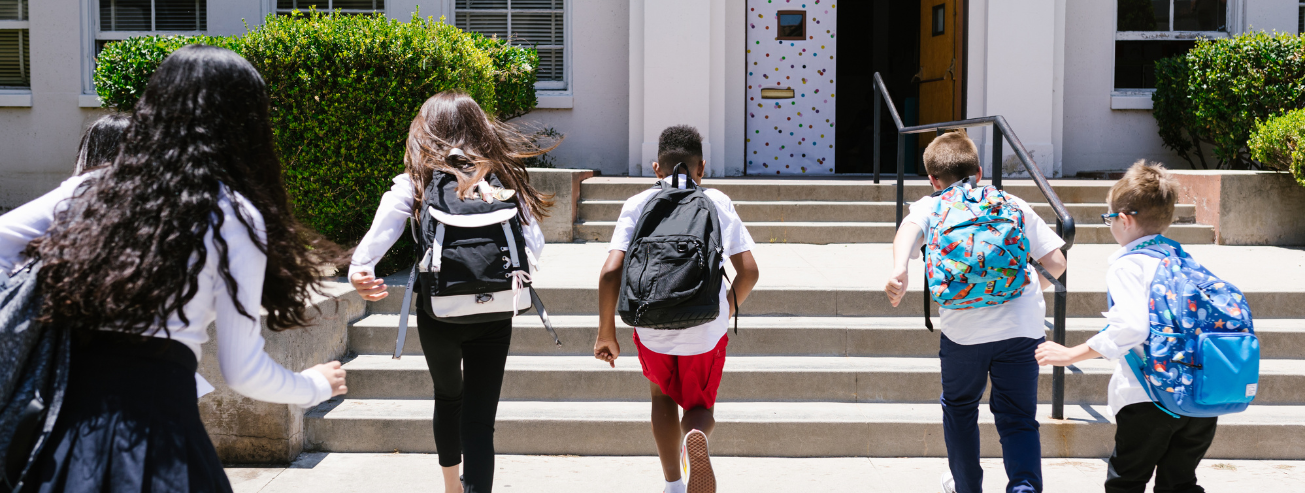There will never be a “right time.” The truth is that we can't achieve what we don't put out into the universe. We all share a common goal: to be the best educators we can be, reaching and inspiring every student. But what does that specifically look like for you? If one of your aspirations for this new school year is to create an inclusive learning environment, then incorporating Universal Design for Learning (UDL) into your practice is a great place to start. (Listen in or read on to learn more about UDL)
To help you get started, we’ve put together a handy checklist
Create a vision to drive your school year focused on balance and flexibility.
Take some time to collaborate with all stakeholders to determine what is most important to you. Next, consider realistic action steps to help you reach your goals and demonstrate your growth and impact. But don’t stop there—hold yourself accountable and check in throughout the year. And don’t only set goals for your work life. Reflect on the importance of finding balance and setting goals for your personal life and mental health. Here is an Here is an outline of the steps I personally use to stay on track.
Eliminate Barriers and Design for Success
We can create better outcomes for all learners, and ourselves, through the power of design. By incorporating Universal Design for Learning (UDL) into your practice, you'll transform your lessons from obstacle courses into pathways for achievement. UDL helps you identify and eliminate barriers that negatively impact student success, empowering you to design lessons that put students at the center. With UDL, learners are actively involved, reflecting on their unique needs and preferences while engaging in lessons aligned with goals and standards. This approach ensures every student has a voice and choice in their learning journey. Remember, the design cycle thrives on iteration and feedback. The more we recognize our role as designers, the more we can be both proactive and responsive to the needs of our learners.
Integrate UDL, SEL, and Behavioral Expectations into Classroom Management Plans
Social-emotional learning should be integrated into all teaching and learning in our classrooms, schools, and districts. Although it is important to carve out time for social-emotional connection (e.g., advisory, Morning Meeting, etc.), we also want to ensure that it is woven into the fabric of our lesson plans. It is critical that we help students identify their emotions and how to regulate those emotions so they can learn and grow as students.
The same is true for us. To excel at our jobs, we must take time to recognize and honor our emotions and design opportunities to feel balanced. Many of your goals included working out and finding moments of balance and self-care. Our students need the same. A simple way to find balance is by managing time effectively, especially in areas like family communications and student feedback. Below are tips on integrating UDL into these processes to deepen connections with your students and their families, build executive function skills in your students, and give you more time.
- Universally design your welcome letters to families and communities to ensure two-way engagement year-round. Establish student-led progress updates.
- Plan for back-to-school night and parent/teacher conferences and give them a UDL make-over by introducing student-led self-reflection opportunities
This year, ditch the "wait for the perfect time" mentality. Embrace the power of design to create a truly inclusive classroom. By incorporating UDL principles and student-centered design thinking, you'll empower your students and unlock their full potential. Remember, it's all about progress, not perfection! Share or download our free UDL checklist.
If you are looking to take the next step on your journey,
- Read and or listen to books and audiobooks from Katie Novak and team
- Take an on-demand course or instructor-led, feedback driven course
- Excite and engage your team, shift practices, and increase learner outcomes! Explore the professional development catalog
- Review the ultimate guide to UDL




